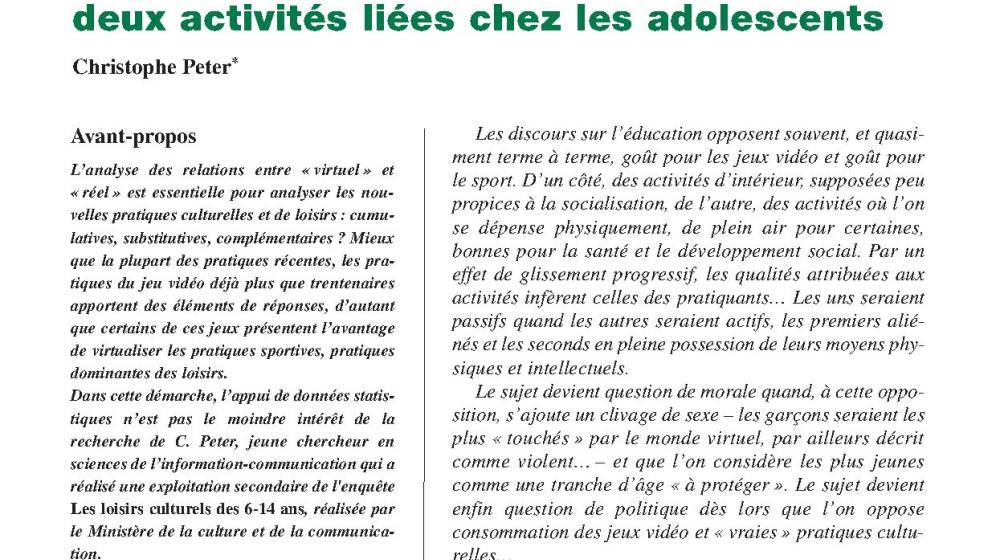Contrasts are often drawn between the liking for video games and the liking for sport. First, as regards the kind of activity: one passive, indoors, cut off from others; the other physically active, outdoor, healthy, etc. Second, as regards gender: boys are considered to be more allured by the virtual dimension. Third, as regards policy: video game playing is often set against “real” cultural practices.
A more refined analysis of the survey on the cultural leisure activities of 6-14 year-olds gives a better idea of how virtual electronic practices and “real” practices compete, replace one another or coexist. It reveals the common mainsprings behind tastes for the two kinds of activity and brings to light an important ingredient in identity-building. It also confirms the persistence of gender-rooted determining factors in the choice of recreational activities.
Comparison of interactions in the real world with those in the virtual game world offers a new approach to how these games affect emotional identification. The aesthetic role played by the virtual bodies in the game world could, for example, be associated with the role played by physical appearance in the construction of young people’s identity. Video games, contrary to their reputation as an addictive and violence-inducing virtual practice divorced from young people’s lives, occupy a place in their personal and social self-development which aids them in identifying with a sexual gender and a cultural universe.
Partager la page

